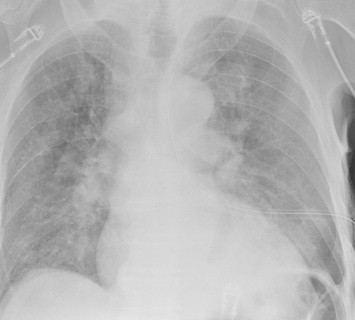So far, I’ve looked at the only two papers in the trauma literature that examine the question of chest tube size for hemothorax. As you may recall, both were woefully underpowered. Finding no difference in a study without enough subjects does not infer that the two interventions have the same results. It simply means that a (much) better study needs to be done.
One of these papers admitted that more work needed to be done, the other did not. And the one that admitted no weaknesses has been quoted by some of the pigtail catheter studies I am reviewing this week as supporting their hypothesis. They are using it as the rationale that even small catheters might work. Hmm, faulty premises?
After reviewing the pigtail for hemothorax literature since the beginning of time, I found exactly two papers that address the issue. And really, it’s just one. The first one published in 2012 was the initial series. The numbers were expanded over the following years by the same authors, and the new data was published in 2017. Of interest, the authors cite their own early paper as supporting the effectiveness of using a pigtail catheter, even though it can’t due to very low numbers Let’s dig in.
This one comes from the group a the University of Arizona in Tucson. They prospectively collected data on pigtail catheter insertions from 2008 to 2014. The outcomes studied included initial drainage output, catheter complications, and failure rate (incomplete drainage requiring another intervention).
Tubes and pigtails were placed by attending physicians or residents. Patient selection was at the discretion of the attending surgeon. The total patient group was analyzed, and then it was split into emergent placement vs non-emergent placement. Here are the factoids:
- A total of 307 chest tubes and 189 pigtails were placed; pigtail usage increased over the study period
- Pigtail catheter patients were older overall, especially in the non-emergent group (this was admitted as selection bias in the paper)
- Initial output was higher in the pigtail group and reached statistical significance in the emergent placement group (500 cc vs 250 cc)
- Pigtail insertion complications trended higher for all patients and in the non-emergent group, but not in the emergent placement group (??)
- Failure rates were not different across the groups
The authors state the their study “clearly demonstrates favorable outcomes in pigtail catheter usage.” But does it?
Bottom line: Once again, this is a completely underpowered study. The pigtail results would need to be 2-3 times better than chest tube results to show any statistical significance. But they are not. So being non-inferior doesn’t mean anything with such small numbers. However, if you properly power a study that shows no differences, then they truly are equivalent. But with the work available to date, you can’t just run out and start using pigtails because they are “as good as” chest tubes.
There were a few statistically significant differences in this study, but again this is clouded by other design problems. The emergent group had significantly more initial output through the pigtails. This is odd from a fluid dynamics point of view. How do you get more of a thick liquid to drain from a tiny tube?
One potential explanation is the ability to more accurately measure the initial output in the pigtail group. When a chest tube is inserted, there is frequently some blood loss on the bed which is difficult to estimate. But when a pigtail is inserted there is almost never any leakage. It all comes out through the tube. Could the excess pigtail drainage be accounted for by external loss during chest tube placement?
The real bottom line: There are a grand total of three published papers in the past seven years that have tried to deal with tube size in traumatic hemothorax. All of them are completely underpowered and rely on the lack of significant differences to tout that they are equivalent. The real answer is: we don’t know. This is certainly not the quality of data you want to use to change your practice. We don’t know for sure if smaller tubes and pigtails result in more retained hemothoraces or followup procedures. So buyer beware! If you choose to use small tubes or pigtails in your patients, you are in uncharted territory. The first author of the 2012 small tube paper even stated that a larger multi-center is needed. I completely agree! Meanwhile, I’ll stick to big (36 Fr) and bigger (40 Fr) for hemothorax.
Reference: A Prospective Study of 7-Year Experience Using Percutaneous 14-French Pigtail Catheters for Traumatic Hemothorax / Hemopneumothorax at a Level-1 Trauma Center: Size Still Does Not Matter. World J Surg 42(1):107-113, 2012.




